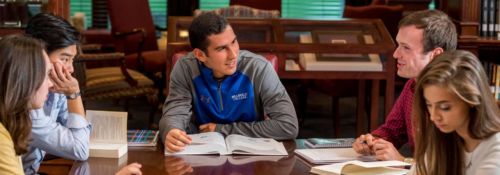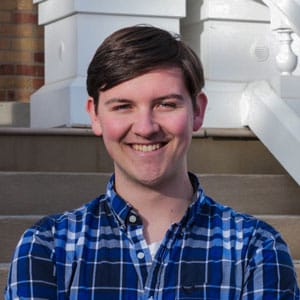
Beauty Across the Lines
Written by Nolan Ryan
It’s 3 a.m. and you’re sitting in the Old Snack Bar with a cup of coffee by your side. A paper is due tomorrow, and you still have eight pages left. We’ve all been there.
The rigorous education we receive at Hillsdale is worth the effort, but the reality is that this level of education requires hard work and discipline—perhaps more than what we’ve given up to this point in our lives. But we should never lose sight of one of the most important things a training in the liberal arts gives us: appreciation for beauty.
Last semester, I took a math course for the core curriculum requirements. As an English major, I was dreading what was sure to be a monotonous hassle of dealing with numbers and formulas. However, Professor Jonathan Gregg announced we would not be working strictly with numbers and equations. His goal, he said, was to train us to think critically about mathematics as a whole. By using logic and reason, we would ultimately find beauty in how math interacts with the world.
Sitting down to examine Euclid’s propositions and proofs, I was surprised that I was actually enjoying the work. I saw that there’s genius, for example, in using circles to create equilateral triangles. This humanities student, in spite of himself, was seeing beauty in another field of study. But that’s as it should be in a liberal arts education.
At Hillsdale, we are in a unique position to reach across the divide between fields of study and apply our skills to looking for truth and the beautiful. My studies shouldn’t only lead me to see where the beauty lies in John Donne’s use of metaphors; I also should be able to wonder at how proteins work in our bodies, or how Wagner illustrates the human condition in his operas.
Beauty and truth are intimately linked, something Emily Dickinson points to in her poem “I died for beauty, but was scarce.” Two people buried next to each other each died for something: one for beauty, the other for truth. Dickinson writes that “the two are one; / We brethren are.” If something is false, it doesn’t reflect reality. It does not show beauty as fully as the truth, which is why J.R.R. Tolkien described myths as “splintered fragment[s] of the true light.”
It’s important that students never forget why we study the things we do. As humans, we are designed to pursue beauty and truth because those things have been woven into the fabric of reality. We spend four years learning what it means to be a human being, and part of that requires hard work to examine reality. It’s this hard work that yields a greater understanding of the beauty which has been infused into our world.
So next time you find yourself writing a paper through the night, remember that it’s not in vain. School is difficult and stressful, but it’s worth it because at the end of it all, this liberal arts training allows us to recognize beauty and truth, which we might have otherwise missed.
 Nolan Ryan, ‘20, is an English major and journalism minor from the frigid heart of northern Michigan. If you want to have a long conversation about life and theology, just start by mentioning C.S. Lewis or Emily Dickinson. In the midst of his studies, he occasionally finds time to pursue his love of ’50s music and good coffee.
Nolan Ryan, ‘20, is an English major and journalism minor from the frigid heart of northern Michigan. If you want to have a long conversation about life and theology, just start by mentioning C.S. Lewis or Emily Dickinson. In the midst of his studies, he occasionally finds time to pursue his love of ’50s music and good coffee.
Published in February 2019